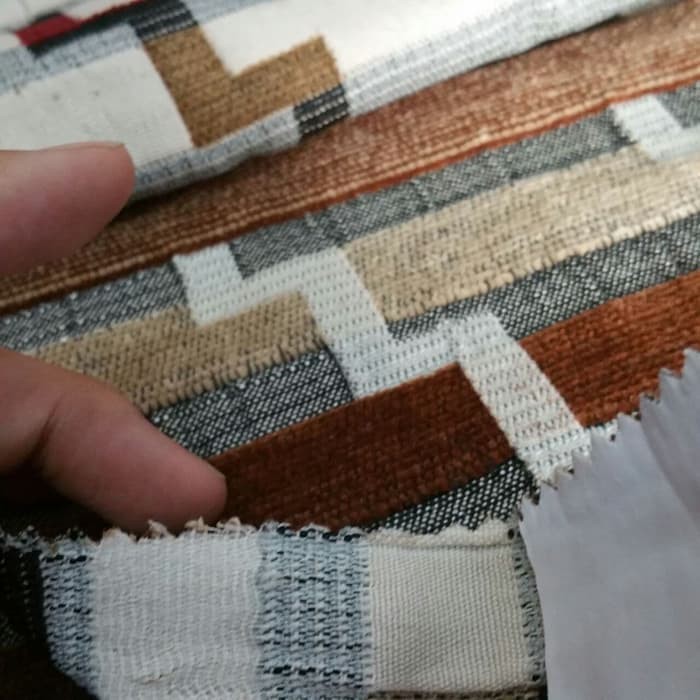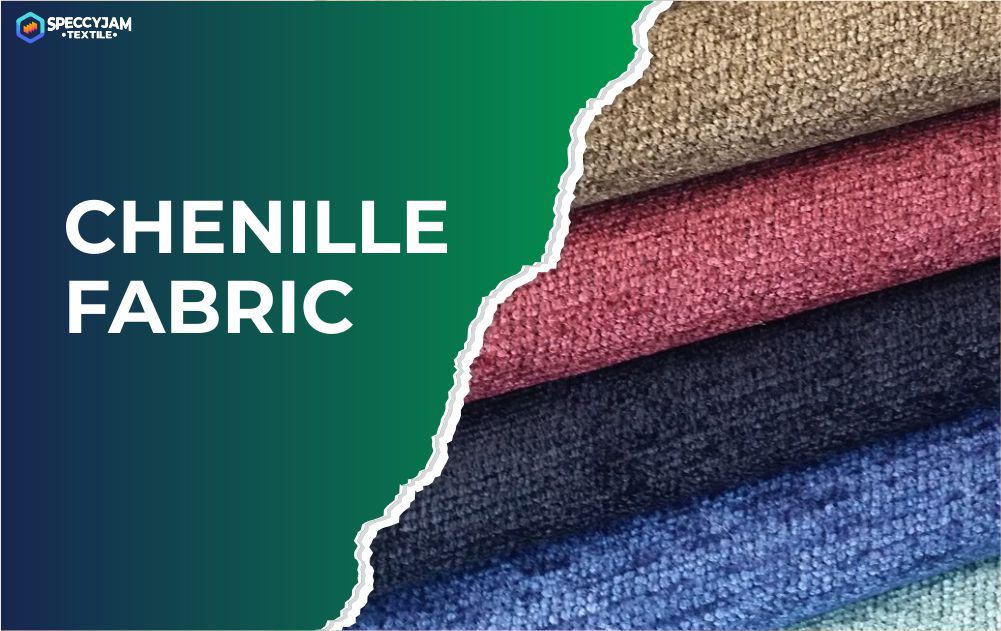Chenille fabric is a relatively newer invention compared to other textiles. It first was made in France, then developed the chenille yarn into a fabric by Alexander Buchanan. He made shawls in Scotland in the 1830s. What is a chenille fabric and what are its uses today?
This fabric was developed further by James Templeton and William Quigley to make rugs, which later was patented by Templeton. Then Catherine Evans from Georgia created a technique to use chenille bedspreads, carpets, bathroom sets, and more.

Contents
What Is Chenille Fabric?
Chenille is the French word for caterpillar. To create the yarn, the threads are piled, which resembles the caterpillar’s fuzzy exterior. It can be made from different fibers, such as cotton, wool, silk, rayon, and synthetic fibers and blends.
This fabric is durable so it can be used for upholstery, clothing, and rugs. For a versatile material, chenille can be difficult to clean.
How Is It Made?
Originally, the chenille was made with the leno method. That is by encasing one weft thread inside two warp threads. Then twisted together so the weft thread will be threaded through them. But this process is slow-going and labor-intensive.
The chenille production method has evolved. Today, the manufacturing process of chenille has a standard. The steps of the process are as follows:
- Put short lengths of yarn between two core yarns. Then twist them together to form loops.
- Those loops were cut into the fuzzy pile.
- To avoid bare patches in the fabric due to the loose piles, low-melt nylon is added to the yarn.
- Next is steaming the yarn to make sure the pile stays put.
- Finally, the yarn is woven to form chenille fabric.

Characteristics of Chenille
What is a chenille fabric characteristic to be known? As mentioned above, one characteristic is durability. As explained below:
- This fabric types is durable but tends to shrink and stretch.
- Fuzzy and soft. Resulted from the short piles of material used on each strand.
- Nice drapes. Chenille has popularity as a soft drape fabric.
- The fabric catches the light at the right angle so it appears shiny and iridescent.
Uses of Chenille Fabric
Originally used for rugs, bedspreads, and linens. Today its usage was expanded to clothing items and home décor. As explained below:
- Carpet and rugs. Because of its durable characteristic, and yet soft and deep pile.
- Home décor. Such as upholstery for chairs, couches, pillows, drapery fabric, and window coverings.
- Blankets and throws. The soft and fuzzy characteristics are perfect for bedspreads, and accent throws.
- Because of its soft feel and beautiful drape, initially, it was used to make shawls.
- It is made into dresses, blouses, and many more.

Pros and Cons
Like any kind of fabric, chenille also has its pros and cons. What is a chenille fabric’s pros and cons? Do check the explanations below:
1. Pros
The most point of the pros of chenille fabric is generally connected with its feel and appearance. Just like the explanation below:
- Soft and fuzzy texture.
- Thick and durable material.
- Drapes well.
- Warm fabric is ideal for cold weather.
- Has an elegant and sophisticated look.
2. Cons
As there are pros, there will be cons to using chenille fabric. It is because of the fabric’s unique weave. The cons are:
- Stains easily and is hard to clean.
- Stretches out and can not return to the original shape, especially when wet.
- The color fades easily, especially under direct sunlight.
- The price is expensive and hard to maintain.
- Not pets-friendly because their claws can get stuck in the pile.
- Because of its uneven texture, this can make the fabric lose chunks of its pile. So it looked like bald patches.
Care for Chenille
Even though this fabric is durable, this material tends to stretch or shrink. That is why chenille should be put in dry cleaning only. Or you can wash it by hand, then lay it flat to dry. Never hang the fabric to avoid stretching. If you use a washing machine, do it with a delicate cycle with warm water, then dry on low heat.
